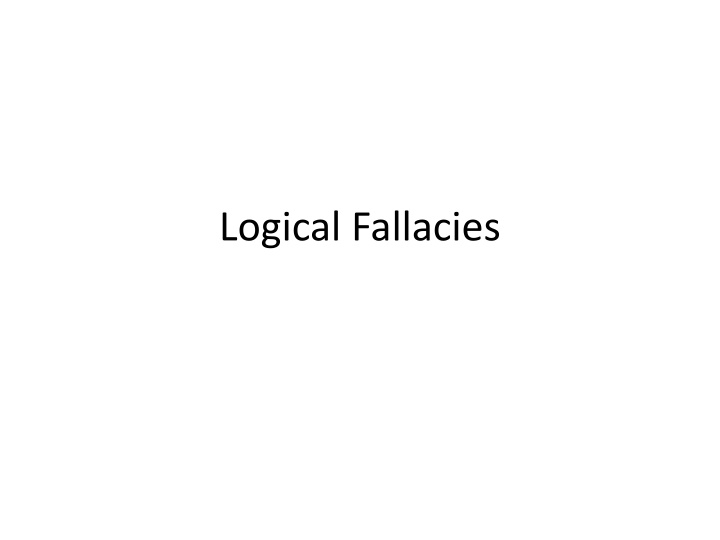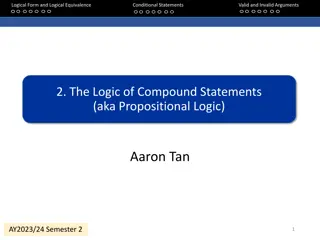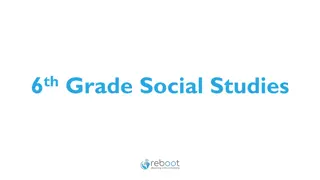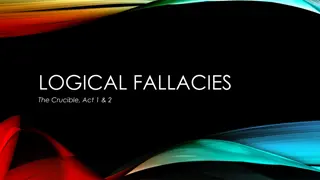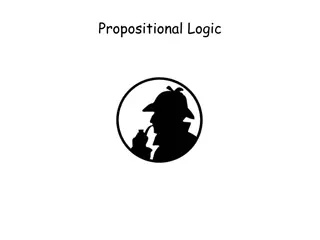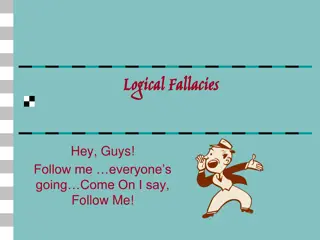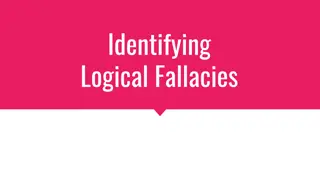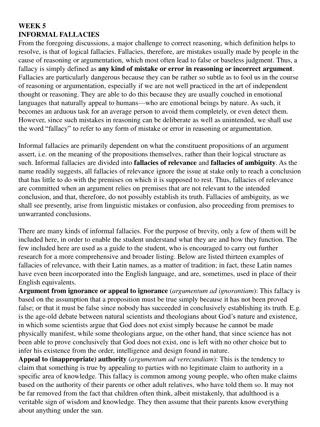Logical Fallacies and How to Address Them
Exploring logical fallacies through examples such as hasty generalization and oversimplification, learning to spot them in media and everyday arguments, and tips on addressing and avoiding fallacies in persuasive writing.
Download Presentation

Please find below an Image/Link to download the presentation.
The content on the website is provided AS IS for your information and personal use only. It may not be sold, licensed, or shared on other websites without obtaining consent from the author.If you encounter any issues during the download, it is possible that the publisher has removed the file from their server.
You are allowed to download the files provided on this website for personal or commercial use, subject to the condition that they are used lawfully. All files are the property of their respective owners.
The content on the website is provided AS IS for your information and personal use only. It may not be sold, licensed, or shared on other websites without obtaining consent from the author.
E N D
Presentation Transcript
A question to get us started Tell me about what is logically wrong with this statement. Why isn t it convincing? What other problems does it have? Every year in California, many students fail to pass the exit exam. I believe that laziness is the reason for so many failures. I have known several students who were unable to pass, even after two or three tries, and all of them spent more time doing other things than studying. I don t think schools should waste money helping lazy students like the ones I know pass the test when they take it a second time. Besides, if they d paid attention in the first place in school they wouldn t have a problem passing the test. I paid attention, and the test was easy for me.
What is a fallacy? The previous slide contained an example of a logical fallacy. Definition of fallacy: a misleading or unsound argument. Any of various types of erroneous reasoning that render arguments logically unsound. ( erroneous means containing an error ) See the handout for some common logical fallacies
Why are logical fallacies tricky? Logical fallacies are tricky because they sound good on the surface. At first glance, why might the statement from our class example be a little bit convincing? Look at the example fallacies provided on the handout. Which ones look good on the surface?
Logical Fallacies in the Media Where do we see logical fallacies? In the media? In advertisements? Logical fallacies are not always as easy to spot as the ones that I have provided for you. Be a savvy reader. Be aware of author biases and of these patterns we have discussed. If you see these fallacies in something you read, question them.
How can you fix a logical fallacy? If you catch yourself or a peer in a logical fallacy, how do you fix it? Moderate your language. One of the fundamental rules of persuasive writing is Don t make claims you can t prove. Also, if you make a sweeping generalization and the audience can think of even ONE example that disproves your generalization, you ve lost credibility with your reader. Give more specifics this especially helps with proof by too few examples, allness, and oversimplification
Fixing logical fallacies Allow for complexity this definitely helps with oversimplification and either/or reasoning Avoid common, over the top phrasing say things in a new way Build credibility your own, and that of your sources. Show yourself to be knowledgeable and reasonable, and your sources to be trustworthy. Look at the big picture think of various people/issues who might be affected by your idea and consider them before making blanket statements.
